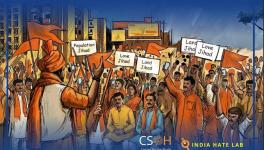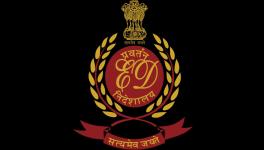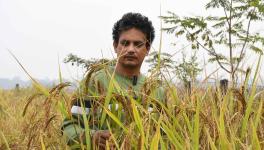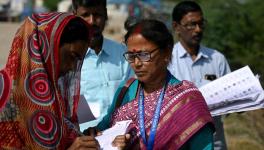The Ticklish Issue of Matua Citizenship and BJP’s Big Hoax
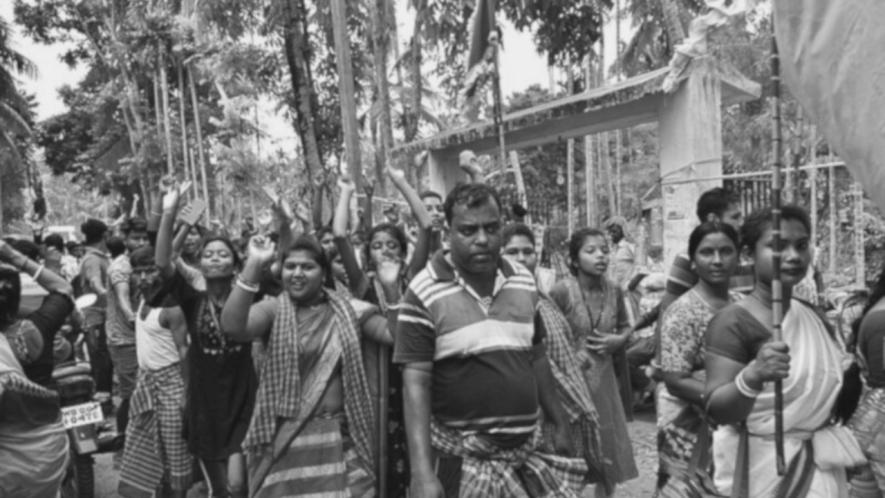
Representational image. | Image Courtesy: Wikimedia Commons
India gained independence on August 15, 1947, with the partition of Bengal and Punjab along religious lines—Hindu and Muslim. The name ‘Mountbatten’ is closely associated with the implementation of the decision. He was appointed Viceroy on March 22, 1947, to make all arrangements for the smooth execution of the decision to award independence. The operation started with the Mountbatten Plan, which was launched on June 3. The Bengal Boundary Commission and the Punjab Boundary Commission were constituted by the announcement of the Governor-General on June 30, 1947, with Sir Syril John Radcliffe as Chairman.
The Bengal Commission included two Muslim and two non-Muslim judges as members. The Boundary Commission was instructed to demarcate the boundaries of the two parts of Bengal based on ascertaining the contiguous areas of Muslims and non-Muslims. In doing so, it was to take into account other factors too. The Report was to be submitted as soon as possible before August 15.
Radcliffe submitted the report on August 12. He hardly got one and a half months. Therefore, suffice it to say that he could not go into the deep details on the subject because of the shortage of time. Nor could he have an idea of on-the-spot positions. Moreover, he rejected the suggestions of the two non-Muslim members (Congress nominees) contained in their report submitted on July 29. As a result, the Radcliffe Report led to erroneous decisions, creating disastrous problems like Berubari and Chhit Mahals (Enclaves).
But apart from the Radcliffe Report, the decision of dividing Bengal created disastrous law and order problems, starting with the Noakhali communal riot in 1946, followed by riots in other places immediately after August 15, causing large-scale exodus of people from East Pakistan. This led to the problem of making arrangements for refugee camps by the Indian government throughout the border districts of West Bengal and Assam. This was followed by the problem of rehabilitating the huge number of immigrants.
According to an estimate by the West Bengal government, the number of refugees in 1958 was 31.32 lakh. Then again, there were incidents of riots, plundering and killings in Rajshahi and Khulna in 1962 and 1964, resulting in the infiltration of 55,000 people into West Bengal.
The next phase of exodus happened in March-April 1971 with Operation Searchlight launched by the West Pakistan Military regime on people in East Bengal, leading to their extreme oppression, communal riots and Bihari-Bengali riots.
Bangladesh came into existence as an independent country with the all-out support of Prime Minister Indira Gandhi after the surrender of the Pakistan Military Force under the command of General A. A. K Niazi on December 16, 1971. But India had to bear the burden of shelter, food, clothing, medical facilities, etc., for about a crore people, of which 75 lakh were in West Bengal itself. Most of these people returned to their newly created country, Bangladesh, within a year. Only about six lakh people did not return and stayed in West Bengal.
According to ‘A Master Plan for Economic Rehabilitation of Displaced Persons in West Bengal’ prepared by the Congress government in 1972, the number of refugees to be rehabilitated was 58 lakh at that time, of which 15 lakh, the highest number was in Nadia, 10.50 lakh in 24-Parganas, 9 lakh in Kolkata, 4.42 lakh in Cooch Behar, 2.93 lakh in West Dinajpur and 2.49 lakh in Jalpaiguri districts.
According to the Refugee Rehabilitation Committee constituted by the Left Front government under the chairmanship of Samar Mukherjee, M.P., in 1978, the number of refugees in 1981 was 76.50 lakh.
From the facts above, it is quite clear that infiltration of people from East Bengal/Bangladesh has been a chronic problem, and both the Central and state governments had to deal with it with compassion.
The displaced people were living in several refugee camps in West Bengal, and were gradually settled in different areas of West Bengal, Assam, Tripura, Orissa, Dandakaranya, Nainital, Andamans and other states.
What has been the status of these people concerning citizenship in India? Yes, a good number of them got citizenship in India by some means or the other.
Successive Congress governments had a positive attitude vis-à-vis these people. Congress leaders in the past had shown deep sympathy and compassion toward these people, mostly from Dalit and OBC (Other Backward Classes) groups. It is worth recalling Jawaharlal Nehru’s ‘Tryst with Destiny’ speech: “We think also of our brothers and sisters who have been cut off from us by political boundaries….”; Sardar Patel’s statement: “It is important to remember that the provision about citizenship will be scrutinised all over the world. They are watching what we are doing.”
Perhaps more relevant is the emotional statement made by Manmohan Singh, as Leader of the Opposition in the Rajya Sabha, on December 18, 2003, while speaking on the Citizenship (Amendment) Bill, 2003: “While I am on the subject, Madam, I would like to point out that with regard to the treatment of refugees after the Partition of the country, the minorities in countries like Bangladesh, have faced persecution, and it is our moral obligation that if circumstances force people, these unfortunate people, to seek refuge in our country, approach to granting citizenship to these unfortunate persons should be more liberal. I sincerely hope that the Hon’ble Deputy Prime Minister bears this in mind in charting out the future course of action with regard to citizenship.” L. K. Advani, as Deputy Prime Minister, also said: “I take note of what has been said and endorse it.”
Such being the attitude of Congress governments, the immigrants faced no major problem. They managed to obtain voter cards, ration cards, Aadhaar cards, caste certificates, etc. and enjoyed the benefits of Indian citizens for all practical purposes.
But problems began with the enacting of the Citizenship (Amendment) Act, 2003 by the Bharatiya Janata Party (BJP) government.
It may be relevant to mention that the Constituent Assembly did not have any discourse on the citizenship issue and left it to Parliament for necessary action. Parliament enacted the Citizenship Act 1955 to cope with citizenship problems. As per the provisions of the Act, Indian citizenship can be acquired in four ways: i) by birth, ii) by descent, iii) by registration and iv) by naturalisation and also by incorporation of territory.
The relevant Sections of the Indian Citizenship Act 1955 are Sections 3 to 7.
Section 3. Citizenship by birth-(1) Except as provided in subsection (2), every person born in India
(a) on or after the 26th day of January, 1950, but before the 1st day of July, 1987;
(b) on or after the 1st day of July 1987 but before the commencement of the Citizenship (Amendment) Act, 2003 (6 of 2004) and either of whose parents is a citizen of India at the time of his birth;
(c) on or after the commencement of the Citizenship (Amendment) Act, 2003 (6 of 2004) where (i) both of his parents are citizens of India; or (ii) One of whose parents is a citizen of India and the other is not an ‘illegal migrant’ at the time of his birth;shall be a citizen of India by birth. Etc, etc.
Section 4-Citizenship by descent: (1) A person born outside India shall be a citizen of India by descent- (a) on or after the 26th day of January 1950, but before the 10th day of December 1992, if his father is a citizen of India at the time of his birth; or (b) on or after the 10th day of December 1992, if either of his parents is a citizen of India at the time of his birth ---provided that etc. etc.
Section 5—Citizenship by registration-(1) Subject to the provisions of this section and such other conditions and restrictions as may be prescribed, the Central Government may, on an application made on this behalf, register as a citizen of India, any person not being an ‘illegal migrant’ who is not already such citizen by virtue of the Constitution or of any other provision of this Act, if he belongs to any of the following categories, namely-(a) to (f) and (g) (i) (g)(ii), (1A), (2) to (6).
Section 6. Citizenship by naturalisation-(1) Where an application is made in the prescribed manner by any person of full age and capacity [nor being an illegal migrant] for the grant of a certificate of naturalisation to him, the Central Government may, if satisfied that the applicant is qualified for naturalisation under the provisions of the Third Schedule, grant to him a certificate of naturalisation provided that---etc. etc.
Section 7. Citizenship by incorporation of territory- If any territory becomes a part of India, the Central Government may, by order notified in the Official Gazette, specify the persons who shall be citizens of India because of their connection with that territory, and those persons shall be citizens of India as from the date specified in the order. [Good many Rajbanshi and other Dalit persons got citizenship of India consequent upon the exchange of Enclaves in 2015 under this Section.]
The provisions of the Citizenship Act, 1955, the mother Act as it stood after the commencement of the Citizenship (Amendment) Act, 2003 (6 of 2004), have been quoted to show how difficult it has now become for immigrants to acquire citizenship. In fact, getting citizenship was made so complicated by the BJP government in 2003 which made the provisions more stringent by introducing in the Act the concept of ‘illegal migrants’, putting immigrants into trouble and then appearing as their saviour in subsequent years.
The amendment defines ‘illegal migrant’ as a foreigner (i) who enters India without a valid passport or travel document or (ii) who stays beyond the permitted time. Illegal migrants are prohibited from acquiring Indian citizenship.
The amendment of 2003 was accorded approval by the President on December 3, 2004. Orissa, at that time, was under BJP-Biju Janata Dal rule. As many as 1,551 poor Bengali refugees of Mahakalpara Block of district Kendrapara were issued notices to leave India in December on the plea that they were Bangladeshis. In fact, several Bengali Hindu refugees were arrested and deported. Similar incidents took place in other states, such as Delhi, Mumbai, Rajasthan etc. Many poor labourers belonging to the Dalit and OBC communities have undergone severe harassment, arrest warrants, and mob attacks; many were jailed and deported. The issue of citizenship thus created an atmosphere of fear and panic among the immigrants. The peaceful lives of these unfortunate victims of the political decision to divide Bengal and the creation of a new country got converted into a dreadful existence, simply because of BJP’s inhuman attitude and actions.
The situation got more complicated with BJP coming to power in the Centre once again in 2014 as well as the change of political scenario in West Bengal, with BJP gaining substantial strength in parts of West Bengal. In 2016, the BJP government at the Centre re-initiated amendments in the Act by inserting the provision that persons belonging to Hindu, Sikh, Buddhist, Jain, Parsi or Christian communities from Afghanistan, Bangladesh or Pakistan entering into India on or before December 31, 2014 etc. shall not be treated as “illegal migrants”.
This was a planned move by BJP to appease the sentiments of Hindu immigrants, mostly belonging to the Dalit and OBC communities. Amongst the Dalits, the Namasudras dominate. Again, within the Namasudra community, the Matua sect has a pre-eminent place. Here, a few words about Matuas will not be irrelevant.
‘Matua’ is a critical and ticklish issue in West Bengal’s electoral politics today. The ideology introduced by Harichand-Guruchand Thakur sometime in the 1840s in the eastern part of undivided Bengal became very popular amongst the people of their own community, namely the Namasudras. It is a non-Brahminic doctrine, lacking faith in Vedic rituals and rights.
The common Namasudras, with simple livelihoods in agriculture and fishing, found their spiritual appetite satiated in the simple act of associating spiritual rites with everyday household work, following the principle ‘Griha dharma griha karma karibe sakal, hate kaj mukhe nam bhakti-I Prabal’ which means, ‘chant the name of your God i.e. do your sadhana while putting your physical labour for livelihood. This is the philosophy followed by the Matuas. People of the Namasudra community generally believe in this non-Brahminic doctrine preached by Harichand-Guruchand.
The Bill of 2016 was examined by the Joint Parliamentary Committee (JPC) where the Opposition members and various organisations representing the interests of immigrants expressed their opinion and raised various objections.
An analysis of all four ways of acquiring citizenship leads to the conclusion that in all cases, the person intending to be a citizen of India must apply for the same. Once the formal application is submitted, he or she will be asked to submit documents to prove support for the requirements mentioned in the Act. For example, to satisfy the provisions of the Act, one has to prove that he/she has entered India due to religious or fear of religious persecution. Notably, the reply of the Intelligence Bureau (IB) to a question posed by the JPC on this was: “It is not possible to verify their claim now.”
However, for recent cases, if any, due verification would be done before any claim for Indian citizenship is entertained. The replies of the Ministry of Home Affairs officials and other agencies concerned were similar to IB. Verification about religious persecution from the country he/she has entered is one such point of enquiry. How long will it take to get a reply etc.? All sorts of questions can be expected. Similarly, getting documents regarding parents' citizenship or residential stay in this country is not just tough but almost impossible. The moot point is that obtaining citizenship under the provisions of the amended Act is very difficult. And BJP continued the campaign that the problem of immigrants' citizenship would be resolved once the Bill was passed.
The JPC took quite some time to submit its report. The Citizenship Amendment Bill 2019 was introduced again in the Lok Sabha on December 9, 2019. It allows such a person to apply for citizenship by registration or naturalisation if he/she meets certain qualifications. To obtain citizenship by naturalisation, the 11-year requirement of residing in India has been reduced to five years for these groups of persons.
There were heated discussions on the Bill and stiff resistance from the Opposition, but it was passed by sheer brute majority of the ruling party in 2019. However, the Act could not be implemented because of the country-wide opposition against it on various counts, the most important being the 100-day women-led demonstration in Delhi’s Shaheen Bagh, followed by police firing and related violence that killed many protesters across the country.
As stated earlier, the majority of the Namasudra/Matua community and other immigrants were evicted from their homes in the then East Bengal at the time of independence of India, immediately before and during the Indo-Pak war in 1971. Citizenship has remained a major issue for these people. After the Trinamool Congress (TMC) came to power in West Bengal in 2011, Chief Minister Mamata Banerjee assured them from time to time that they would be given citizenship in due course. Again, Banerjee made confusing utterances on different occasions that the Namasudra people and other migrants of the state are already citizens since they are enjoying all the facilities of Indian citizens, including Scheduled Caste benefits. But she did not clarify why her party leaders made an allegation in 2008 that the voter list of the Bongaon/Gaighata Assembly constituency contained names of 15,000 Bangladeshis who are not citizens of India. This implies that the TMC admits that all those who come to the state from Bangladesh/East Bengal are not citizens. In fact, this is the actual position. All of them are not citizens per the Citizenship Acts' provisions.
Congress governments and the United Progressive Alliance (UPA) government headed by Manmohan Singh remained unconcerned and silent on the issue of citizenship all along.
Bu, the BJP has not kept quiet in their lip service on this front; rather, the party has been trying to mislead people through continued campaigns that the Citizenship (Amendment) Act, 2019, popularly known as CAA, will resolve the problem of citizenship of the immigrants and by doing so the party has been able to draw a major section of the immigrants from Bangladesh in its favour.
The history of the rise and growth of BJP in West Bengal after the panchayat and municipal elections in 2018 and after that is worth remembering in this connection. BJP could attract the voters by drawing their attention to large-scale electoral malpractices and an environment of fear and terrorism created by TMC in the rural areas, assuring them of necessary shelter from TMC's wrath.
Although Namasudra community people and other immigrants reside all over West Bengal, they are mostly concentrated in the border districts. Taking full advantage of the political situation in the state, particularly in the border districts, the BJP used the promise of implementing the CAA as a polarising plank during the 2019 Parliamentary and 2021 Assembly Elections, resorting to a hoax that the citizenship problem of the immigrants is going to be resolved once the provisions of the CAA are given effect. The result was that BJP won 18 out of 42 Lok Sabha seats in 2019 and more than 70 seats in the Assembly election 2021.
However, from 2019 to 2023 is quite a long period, and the BJP has been unable to frame rules under the Act. The possibility of doing so is also quite remote. And a major section of the immigrants realises this fact. They are bewildered. The educated section among immigrants started analysing the provisions of the CAA, and they are quite convinced that citizenship, assured by BJP, is nothing but a big bluff.
Various organisations have now started mobilising opinion against BJP on this issue. For example, Sangbidhan Bachao Manch, an organisation of immigrants (including Matuas), minorities and adivasis, has discussed this issue at length in a few well-attended conventions during the past few months.
The United Central Refugee Council (UCRC) amplified their grievances in a press meeting in the Press Club on February 5. Pashcimbanga Samajik Nyay Mancha, UCRC, Pashcimbanga Adivasi and Lok Shilpi Sangha, along with other organisations, are going to have a State Convention on ‘Citizenship’ on February 23, 2024.
Even BJP leaders from among the immigrants of Bengal have expressed their angst and anguish over the non-implementation of CAA and false promises made by the Central government. They demanded immediate, hassle-free implementation of CAA. Some of the ministers, including Home Minister Amit Shah, are, however, still carrying on the hoax that this will be done shortly. Given the situation prevailing on the ground, it appears the BJP government may issue some notifications on the eve of the Lok Sabha election notification, once again to continue the hoax and reap electoral benefits.
The writer is a former IAS officer and PAC Chairman on citizenship issues. The views expressed are personal.)
Get the latest reports & analysis with people's perspective on Protests, movements & deep analytical videos, discussions of the current affairs in your Telegram app. Subscribe to NewsClick's Telegram channel & get Real-Time updates on stories, as they get published on our website.









